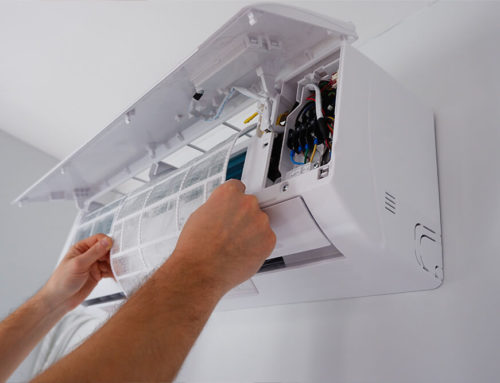Just as you have got to grips with the difference between split ac and central AC along comes a new one; the Variable Refrigerant Flow System — VRF. Actually, it’s not that new. It has been in use in Europe an Asia for decades, but it is only in the last five to ten years that it has started to become more well-known here in the United States.
What is VRF system?
The VRF HVAC system, just like the traditional units you’ll find in residential spaces, is refrigerant-based and has outdoor and indoor components. However, there are more differences than similarities when compared to conventional units.
If you have central air conditioning, you know the air is cooled in a big clunky outdoor unit and pumped around the home through the ductwork If you want different areas at different temperatures, you have to adjust the airflow by installing dampers in your ductwork.
In contrast, the VRF system uses several smaller air handlers that can be controlled individually but are all part of one big system. The name variable refrigerant flow comes from the fact that the system can control how much refrigerant goes to each air handler. This gives this type of system several advantages over conventional systems.
Advantages of a VRF system
- Energy Efficiency
As the system is designed to provide the precise level of heating or cooling that is required, it runs at a lower capacity and less frequently than conventional units. It also has the ability to recycle heat extracted during the cooling process and use it in areas that require heating.
- Reduced noise levels
Smaller air handlers make less noise than one big clunky outdoor unit, and the inside units are much quieter than a normal split system.
- Greater reliability
The VRF system runs only when necessary and is designed to work under partial-load conditions. This means there is less wear and tear on the system and consequently, fewer breakdowns. Another advantage is that even if one air handler breaks down, the others will carry on functioning as normal, so you will only suffer partial AC loss and most of your space will be unaffected.
- Heat and cool simultaneously
By recycling and redirecting the heat captured in the cooling process, vrf air conditioning system can cool one part of your space while heating another, making it ideal for families with different ideas about what the ideal indoor temperature should be, or large office spaces where temperatures can fluctuate greatly, depending on use and location.
- Zoned operations
This type of system allows you to set a different temperature in different areas, depending on your requirements. The compressor will precisely judge the amount of refrigerant needed for each zone and make sure your space is exactly the way you like it with no hot or cold spots or humidity.
There are disadvantages to this type of system as well, the biggest being that the upfront investment in purchase and installation will be much higher than for conventional systems. It is also very important that you only deal with properly qualified installation and maintenance men, and these are hard to find as the system is relatively new. However, overall, we think that VRF HVAC systems are the future of air-conditioning.
We hope this blog provided you with the information you were looking for. If you have any further questions regarding VRF or any other type of HVAC system, please get in touch with us here, at Chills Air Conditioning, and our friendly experts will be delighted to help you.





